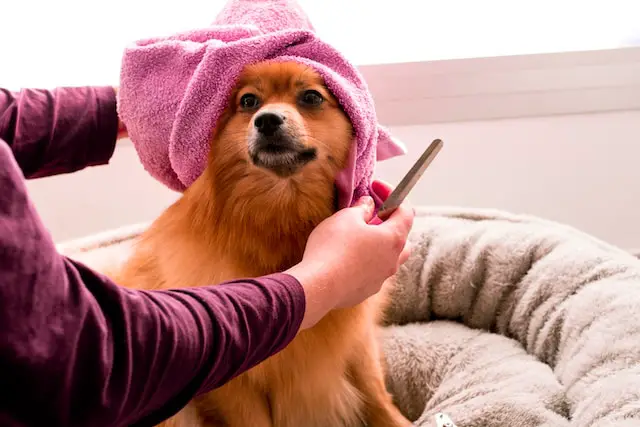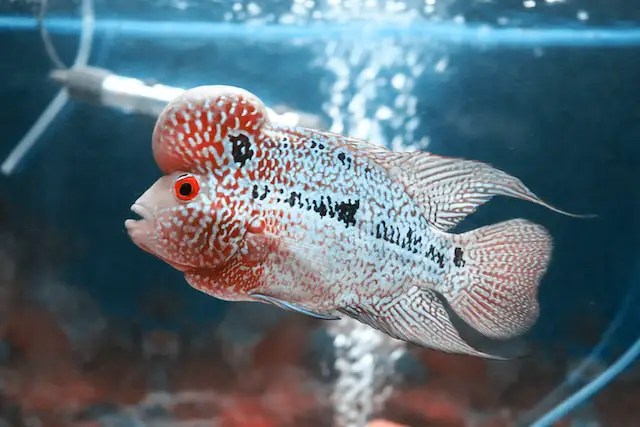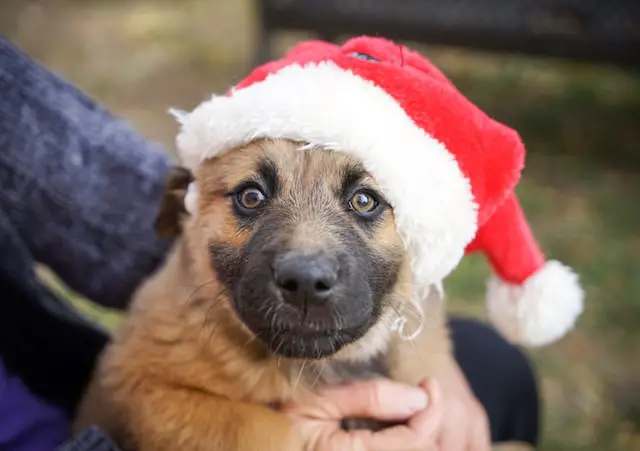Do You Need a License to Groom Dogs?
Do You Need a License to Groom Dogs?
Hey there, fellow dog enthusiasts! 🐶 Are you wondering do you need a license to groom dogs? Dog grooming is more than just giving our four-legged pals a stylish look. It’s a blend of art and science, ensuring that not only do they look fabulous, but they also feel great. It’s about health, hygiene, and happiness, all wrapped up in a snazzy bow (sometimes quite literally).
Now, if you’re pondering a career in this world of brushes, bows, and bathtubs, or just curious about the profession, there’s a burning question you might have: do you need a license to groom dogs? Let’s unravel Do you need a license to groom dogs? see what it takes to become a bona fide dog groomer.
Why licensing is essential
Grooming a dog isn’t just about snipping fur and trimming nails. It’s an intricate process that requires understanding the specific needs of each breed, recognizing potential health issues, and ensuring the safety and well-being of the animal. Licensing plays a crucial role in this process, and here’s why:
Establishment of Credibility
Just as we wouldn’t want a doctor without a proper medical degree treating us, pet owners seek groomers who have a recognized stamp of approval. A license acts as this stamp, vouching for the groomer’s expertise and knowledge.
Assurance of Minimum Standard
Licensing often requires passing certain exams or completing specific courses. This ensures that every licensed groomer adheres to a minimum standard of knowledge and skill, much like a driver’s license ensures everyone on the road knows the basics of driving.
Pet Safety
Mistakes in grooming can lead to injuries or health issues. Proper training, which is a prerequisite for licensing in many places, equips groomers with the techniques to handle pets safely. It’s the difference between using a pair of scissors at home and a surgeon wielding a scalpel in a sterile environment.
Continuous Learning
Some licensing bodies require groomers to take ongoing education to renew their licenses. This means a licensed groomer is likely to be up-to-date with the latest techniques, tools, and safety measures.
Building Trust with Pet Owners
When pet owners see that a groomer is licensed, it gives them peace of mind. They feel more comfortable entrusting their furry family members to someone who has been vetted and approved by a governing body.
Legal Protections and Compliance
In places where licensing is mandated, operating without one can lead to legal consequences. But beyond the law, having a license can protect groomers from potential liabilities. It’s a layer of assurance that the groomer has met certain safety and training standards.
In essence, licensing in the dog grooming world is more than just a piece of paper. It’s a commitment to excellence, a promise of safety, and a testament to the groomer’s dedication to their craft.
The Requirements for Dog Grooming Licensing
Entering the profession of dog grooming can be a rewarding journey, but like any specialized career path, there are certain prerequisites and guidelines that need to be adhered to. Licensing, in particular, can have a variety of requirements based on locale and authority:
State and Local Regulations
Depending on where you’re located, the requirements can vary considerably. Some states have strict licensing mandates, while others leave it to the local municipalities to decide.
Specific state regulations
Each state has its nuances. For instance, while New York might focus on the practical examination, Texas could emphasize the importance of a theoretical understanding.
Local Requirements
Beyond state regulations, your city or county might have additional stipulations. It’s not uncommon for local governments to have rules regarding the sanitation of the grooming facility or emergency protocols.
Formal Education and Training
Before you can apply for a license, you usually need to undergo a structured training program.
Accredited Schools
There are institutions dedicated solely to the art and science of dog grooming. These schools offer courses ranging from basic grooming techniques to specialized grooming for specific breeds.
Workshops and Seminars
Occasionally, licensing boards recognize workshops or seminars as part of the educational requirement. These can be shorter, more intensive sessions focusing on specific aspects of grooming.
Practical Experience
Theory is one half of the story. The hands-on experience is where you truly understand the intricacies of grooming different breeds.
Apprenticeship
Many groomers start as apprentices under experienced professionals. This mentorship phase can last for months to years, allowing the trainee to grasp the nuances of the trade.
Portfolio Development
Some licensing boards might require you to present a portfolio showcasing your work. This serves as tangible proof of your grooming capabilities.
Examinations
To ensure that you have the necessary skills and knowledge, you may need to pass both written and practical exams. These tests gauge your understanding of dog anatomy, breed specifics, grooming techniques, and safety procedures.
Background Check
Given that you’ll be handling pets, some states or institutions might require a background check to ensure you don’t have any history of animal abuse.
Health and Safety Certifications
Some regions might necessitate certifications in first aid for animals or courses on maintaining hygiene and safety in a grooming facility.
Insurance
Before getting a license, you might need to show proof of insurance. This is to protect both the groomer and the pet owner in case of any unforeseen incidents.
In essence, obtaining a license for dog grooming is a comprehensive process that ensures you are well-prepared for the challenges and joys of the profession. It’s a testament to your dedication, ensuring pet owners that their furry friends are in capable and caring hands.
Once you’ve got the education, it’s time to make it official.
Application Process for Dog Grooming License
The application process for obtaining a dog grooming license can vary depending on the country, state, or municipality you’re in, but there are some general steps that are commonly followed. Here’s a basic outline of what the application process might entail:
Research Local Requirements
Before starting the application process, it’s essential to research and understand the specific requirements for your area. This will ensure that you’re not missing any necessary steps or documentation.
Complete Required Training:
Typically, before applying for a license, you’ll need to complete a dog grooming course from an accredited institution. This course will provide both theoretical knowledge and practical experience.
Compile Necessary Documents:
-
- Proof of completed dog grooming course
- Certificates from any supplementary workshops or seminars
- Identification documents (e.g., driver’s license or passport)
- Proof of apprenticeship or hands-on experience (if required)
- Portfolio of work (if required by your jurisdiction)
Fill Out the Application Form:
Obtain the official application form from the licensing body in your area. Carefully fill out all sections, ensuring accuracy and completeness. Some forms may be available online, while others might be paper-based.
Pass Examinations:
-
- The written test may cover topics like dog anatomy, breed specifics, grooming techniques, safety protocols, and ethics.
- The practical exam will test your actual grooming skills, where you may be asked to groom a dog under observation.
Background Check:
Some regions might perform a background check to ensure you have no history of animal mistreatment or other serious offenses.
Pay the Application Fee:
Almost all licensing processes involve an application fee. This fee varies based on location and sometimes the type of license you’re applying for (e.g., individual vs. business). Make sure to check the payment methods accepted.
Wait for Approval:
Once you’ve submitted your application, there will be a waiting period during which the licensing body reviews your application, checks references, and verifies your qualifications.
License Issuance:
If your application is approved and you’ve met all requirements, you’ll receive your dog grooming license. This might be a physical document, a badge, or even a digital certificate, depending on the issuing authority.
Stay Updated on Renewal:
Most licenses have an expiration date, so it’s essential to know when your license needs renewal. Renewing often requires proof of continued education or training in the field.
Remember, while this process provides a general overview, always refer to the specific regulations and requirements of your local or state governing body to ensure you’re following the correct procedure.
Fees and Renewal for Dog Grooming License
The fees and renewal process associated with obtaining and maintaining a dog grooming license can differ considerably depending on the jurisdiction. However, I can provide a general overview to give you an idea of what to expect:
Initial Licensing Fee:
When you apply for a dog grooming license for the first time, there’s typically an application fee. This fee covers the cost of processing your application, background checks (if applicable), and issuing the license. The amount can vary widely based on the state, city, or country, as well as the type of license (individual groomer vs. grooming business).
Examination Fee:
If your jurisdiction requires you to take a written and/or practical exam as part of the licensing process, there may be a separate fee associated with these tests.
Background Check Fee:
In areas where a background check is a requirement, there might be an additional cost to cover this service.
Renewal Fee:
Licenses typically aren’t perpetual. They come with an expiration date, meaning you’ll need to renew your license periodically (e.g., every 1, 2, or 5 years). The renewal fee might be the same as or slightly less than the initial licensing fee.
Late Renewal Penalties:
If you fail to renew your license on time, you might incur a late fee. This penalty encourages timely renewals and ensures that all active groomers maintain current licensure.
Continued Education Costs:
Some jurisdictions require groomers to undergo continued education or training to renew their license. While not a direct licensing fee, this can be an additional cost associated with maintaining licensure.
Replacement Fee:
If you lose or damage your license, or if any details change (e.g., name or address), there might be a fee associated with getting a replacement license issued.
Renewal Process:
- Notification:
- Many licensing bodies send out notifications (either via mail or email) reminding licensees of upcoming expiration dates and renewal requirements.
- Submission of Renewal Application:
- Depending on the licensing body, you may need to complete a renewal application form, though it’s usually shorter and more straightforward than the initial application.
- Proof of Continued Education:
- If required, submit documentation proving that you’ve completed any necessary continued education or training since your last license issuance.
- Payment:
- Pay the associated renewal fee, along with any other applicable fees or charges.
- Approval:
- Once your renewal application is reviewed and approved, you’ll receive an updated license, valid for another specified period.
Always keep an eye on the expiry date of your license and be proactive about the renewal process. Operating without a valid license can result in penalties, loss of clientele trust, and even legal repercussions.
Remember, the specifics can vary, so always refer to the governing body responsible for dog grooming licenses in your particular area for precise details and costs.
What Happens If You Don’t Get a License?
Choosing to operate as a dog groomer without a required license can lead to a series of repercussions. While the specifics can vary depending on local regulations and laws, here’s a general overview of what might happen if you don’t obtain a necessary license:
-
Legal Consequences:
- Fines and Penalties: If you’re caught operating without a license, you could face significant fines. These fines might increase for repeat offenders.
- Cease and Desist Orders: Local authorities could issue a formal order demanding that you stop offering grooming services until you obtain the necessary license.
- Legal Action: In severe cases, especially if a pet is harmed due to negligence or lack of professional knowledge, you could face legal action or lawsuits.
-
Loss of Trust and Reputation:
- Distrust from Clients: Trust is vital in the grooming industry. Clients are entrusting you with their beloved pets. Operating without a license can erode this trust, as it might appear that you’re cutting corners or not adhering to professional standards.
- Negative Word of Mouth: In today’s digital age, word travels fast. One disgruntled client can spread the word about your lack of licensure, leading to negative reviews and damaging your reputation.
-
Financial Implications:
- Apart from potential fines, operating without a license can have other financial repercussions. For instance, insurance companies might refuse coverage or claims if you’re operating illegally.
-
Lack of Professional Development:
- Licensing often ensures that groomers stay updated with the latest techniques, safety protocols, and industry standards. Without this framework, you might miss out on valuable knowledge and skills development.
-
Limited Business Opportunities:
- Collaborations: Other businesses, like pet stores or veterinary clinics, might refuse to collaborate or refer clients to an unlicensed groomer.
- Rental Agreements: Some commercial landlords or rental spaces might require proof of licensing before allowing you to operate a grooming business on their premises.
-
Emotional and Mental Stress:
- The constant fear of getting caught, facing legal actions, or tarnishing your reputation can be mentally taxing. This stress might also impact the quality of your work and your overall well-being.
-
Potential Closure:
- Continued non-compliance, especially after receiving warnings or paying fines, could lead to the permanent closure of your grooming business.
If you’re passionate about dog grooming and are considering it as a profession, it’s always advisable to follow the appropriate legal and professional channels. Not only will it provide peace of mind, but it will also establish a foundation of trust with your clientele and ensure you’re delivering the best care possible.
Conclusion: Do you need a license to groom dogs?
While licensing requirements vary, one thing’s for sure: having a license can open doors and bring peace of mind to both you and pet owners. So, if you’re passionate about dog grooming, why not take that extra step and get licensed?
FAQs
- Do all states require dog groomers to be licensed?
- No, requirements vary by state. It’s best to check local regulations.
- How long does it take to get a dog grooming license?
- It depends on the training program and local processing times. Typically, a few months to a year.
- Is hands-on experience mandatory for licensing?
- While not always mandatory, it’s highly recommended for better grooming skills and client trust.
- What if my license expires?
- You’d likely need to renew it. Check with your issuing authority for specifics.
- Can I groom dogs without a license if I’m just helping friends or family?
- Generally, informal arrangements are okay, but always best to check local rules. Safety first!
- Can I bring my dog to a barber?
- No, the barber is a different training and techniques versus with dog grooming.
Related post: https://petexpertconnect.com/doberman-health-issues/




